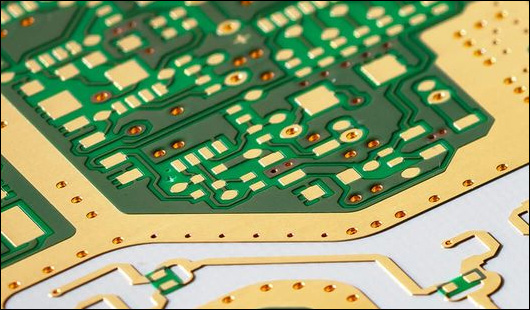In the realm of electronics, high-frequency circuits have revolutionized the way we communicate and process data. From wireless technology to satellite communication, the demand for high-speed, reliable, and efficient systems continues to drive the need for high-frequency printed circuit boards (PCBs). This article explores the essential aspects of designing high-frequency PCBs, focusing on key materials, dielectric properties, and considerations to achieve optimal performance for high-frequency applications.

High-frequency circuits carry signals in the radio frequency (RF) and microwave range, typically spanning from a few megahertz (MHz) to several gigahertz (GHz). These circuits require careful selection of PCB materials and meticulous design practices to ensure signal integrity, minimize signal loss, and eliminate interference.
Choosing the Right Materials for High-Frequency PCBs
Dielectric Material: The dielectric material used in PCBs plays a critical role in maintaining signal integrity. Dielectric constant (Dk) or relative permittivity of the material determines how effectively it can hold and transmit the electrical energy. Materials with low Dk values, such as PTFE-based laminates and ceramic-filled hydrocarbon materials, are commonly preferred for their minimal signal loss and reduced interference.
Dissipation Factor (Df): The dissipation factor, represented as Df, measures the energy loss within a dielectric material. It is crucial to choose a PCB material with a low Df value to minimize signal losses, maintain accurate amplitude and phase relationships, and reduce the insertion loss during signal propagation.
Coefficient of Thermal Expansion (CTE): High-frequency PCBs are often subjected to temperature variations due to the heat generated by high-power applications. Matching the CTE of the PCB material with other components and substrates helps prevent issues like warping, delamination, and mechanical stress that can impact circuit performance over time.
Design Layout: To mitigate signal interference and ensure optimal performance, careful attention must be given to the physical layout of the high-frequency PCB. Appropriate ground planes, separation of analog and digital components, controlled impedance traces, and proper signal routing techniques are critical for minimizing cross-talk and achieving a stable high-frequency environment.
Signal Integrity: High-speed design principles, such as controlled impedance and controlled skew, are essential to maintain signal integrity in high-frequency PCBs. Using impedance matching techniques, such as stripline or microstrip traces, helps prevent reflections and signal distortions.
Manufacturing Techniques: Collaborating with experienced PCB manufacturers is vital when working with high-frequency designs. Ensuring precise layer alignment, accurate drill hole placement, controlled etching processes, and meticulous surface finishes can significantly impact the final performance of high-frequency PCBs.
Rogers 4350B laminates have gained popularity due to their excellent electrical performance, low dielectric loss, and superior thermal conductivity. These laminates exhibit consistent electrical properties across a wide frequency range, making them an ideal choice for high-frequency applications.
Designing high-frequency PCBs necessitates careful selection of materials, consideration of dielectric properties, and adherence to essential design practices. By focusing on materials with low dielectric constant (Dk), low dissipation factor (Df), and appropriate CTE for thermal management, engineers can develop PCBs that ensure optimal signal integrity, low signal loss, and reliable performance in high-frequency applications. Combined with meticulous design layouts and manufacturing techniques, high-frequency PCBs enable the realization of cutting-edge electronic systems capable of handling the demands of high-speed data communication and advanced technologies.